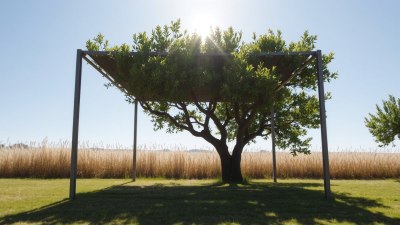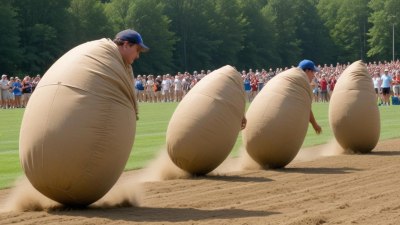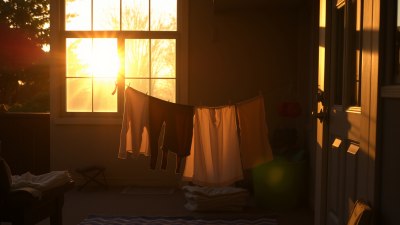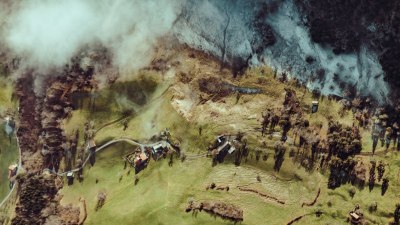Why You Always Underestimate How Far Away the Shade Actually Is
Explore why your brain misjudges the distance to shade, uncovering psychological and physical reasons for this common error.

Image created with Flux Schnell
Have you ever been outside on a scorching sunny day, desperately searching for shade, only to find that the shady spot you thought was just a few steps away was actually much further? This common experience highlights a fascinating quirk in human perception: we often underestimate how far away shade actually is. Understanding why this happens requires a look into both our psychological makeup and the physical environment around us.
Understanding Distance Perception
Our perception of distance is not a simple measurement; it's a complex interpretation performed by the brain based on visual, tactile, and contextual information. When we look at a scene, our brain uses various cues such as size, texture gradient, motion parallax, and lighting to judge how far away objects are. However, these cues often get distorted by environmental factors and personal biases, especially in the context of shade and sunlight.
The Role of Motivation and Desire
Motivation plays a crucial role in how we perceive distance. The desire to reach a cooler spot on a hot day can unconsciously bias our brain's interpretation, causing us to shortcut reality. Our brain tends to minimize the perceived effort or distance to something we greatly want, leading to underestimation. This effect is similar to the “goal effect,” where people estimate distances to desirable locations as shorter than they really are.
Illumination and Visual Contrast
Light and shadow profoundly affect depth perception. Shade typically appears as a darker, cooler patch in our visual field, often surrounded by bright sunlight. The stark contrast between these lighting conditions may create visual illusions that alter depth cues. Shadows can flatten out the visual landscape, making the shaded area seem closer. Since shade is marked by diminished brightness and reduced contrast, it can be harder for the brain to detect spatial cues that indicate true distance.
Environmental Context and Complexity
The surroundings influence how we judge where shade begins. In forested areas, the canopy creates complex dappled sunlight and patchy shadows, making it challenging to distinguish fully shaded spots. In urban settings, shadow edges fall abruptly on sidewalks or buildings, but large reflective surfaces or multiple light sources can confuse perception. This environmental complexity often makes shaded areas appear closer or less extensive than they actually are.
Physical Fatigue and Heat – Impact on Perception
When you are hot and tired, your cognitive functions, including spatial judgment, are impaired. Heat stress can lead to dehydration and reduced mental acuity, making it harder to accurately gauge distances. Fatigue can create a sense of impatience or urgency that biases your perception, compelling you to believe the desired shaded spot is near, so you mentally shrink the distance to it.
Evolutionary Perspectives on Shade Seeking
From an evolutionary standpoint, seeking shade has been crucial for survival, serving as a refuge from harmful sun exposure and heatstroke. This importance may have wired our brains to be overly optimistic about the availability and proximity of shade. Premature or inaccurate estimations might have been balanced by the urgency to reach shade quickly. Such cognitive shortcuts may persist today, even though many environmental settings differ from ancestral landscapes.
Visual Illusions Associated With Shade
Several well-known visual illusions demonstrate how shadows and shading can distort spatial judgment. The ‘shadow size illusion,’ for example, shows how shadow shapes and lengths can mislead size and distance perception. Similarly, when a shadow blends into darker backgrounds, such as shaded tree trunks or rocks, the boundaries become ambiguous, causing the brain to misjudge how far away shade patches are. This perceptual distortion particularly affects quick judgments made while walking or running.
The Effect of Surface Texture and Color
Surface properties also influence depth perception around shaded areas. Rough textures and brighter colors typically provide more spatial cues than smooth or dark surfaces. Sunlit pavement with bright textures contrasts strongly with shaded regions, but if the surface under the shade is darker or homogenous, the brain receives fewer visual clues to estimate distance accurately. This lack of detailed texture information can lead to falsely assuming the shaded spot is nearer.
How Focus and Attention Shift Distances
Where you direct your attention changes your distance judgments. When you fixate intently on a shaded area, especially under discomfort from heat, your brain may compress the sense of space between yourself and the shade, a phenomenon linked to attentional narrowing. This focused gaze causes the brain to overemphasize the target's presence and de-emphasize environmental context, contributing to underestimation.
Influence of Past Experiences
Your brain builds expectations based on prior knowledge and memories. If in past instances shade was relatively close, your mental model adjusts to expect shade to be nearby. These learned heuristics speed decision-making but often overlook variability in the current environment, including changes caused by weather, time of day, or location. Such cognitive shortcuts create systematic bias in estimating shade distance.
Strategies to Improve Shade Distance Estimation
Being aware of these biases helps you better judge how far away shade is. One practical strategy is to pause and visually scan the area carefully, seeking multiple depth cues such as shadows cast, surface textures, and relative sizes of objects around. Taking small steps towards the shade and reassessing distance frequently can prevent overshooting your target. Using objects with known dimensions as reference points also aids accurate estimation.
Implications for Outdoor Activities
Properly estimating how far away shade is can improve safety during outdoor activities, especially in hot climates. Underestimating distance to shade may lead to prolonged sun exposure, increasing risk of heat exhaustion or sunburn. Hikers, athletes, and outdoor workers should develop mindfulness about this perceptual bias and plan routes with shaded breaks factored realistically. Carrying portable shade or sun protection is also advisable.
Technology and Shade Perception
Modern technologies, such as augmented reality and mobile mapping apps, could assist in visualizing shade in real-time to provide more accurate distance measurements. These tools integrate environmental data with GPS and 3D modeling to highlight shaded areas precisely. While not yet widespread, such technologies hold promise for outdoor navigation, preventing heat-related health issues by informing users about shade availability and distances.
Research Directions on Shade and Perception
Further research into the neurocognitive mechanisms behind shade distance misperception is valuable. Studies using virtual reality environments can simulate varied lighting and terrain conditions to examine how the brain processes shade cues. Cross-disciplinary work combining psychology, environmental science, and neuroscience will elucidate how factors such as heat stress, motivation, and visual contrast interplay. Improved understanding could inform design of safer outdoor spaces and health guidelines.
In summary, you consistently underestimate how far away shade is due to a combination of psychological motivations, environmental visual illusions, physical fatigue, and perceptual shortcuts. Bright sunlight and deep shadows alter depth cues that the brain relies on. Heat and exhaustion degrade cognitive accuracy and push your brain toward optimistic, goal-oriented estimates. Environmental complexity and prior experience also skew judgment. Recognizing these contributors helps mitigate the risks associated with misjudgments in outdoor settings.
Next time you find yourself frustrated that the shady tree, tent, or shelter is nowhere near as close as it looks, remember this is a shared human experience shaped by brain function, environment, and survival instincts. By staying mindful and adopting simple strategies, you can better navigate the outdoor world, improving your comfort and safety while enjoying the shade when you need it most.











